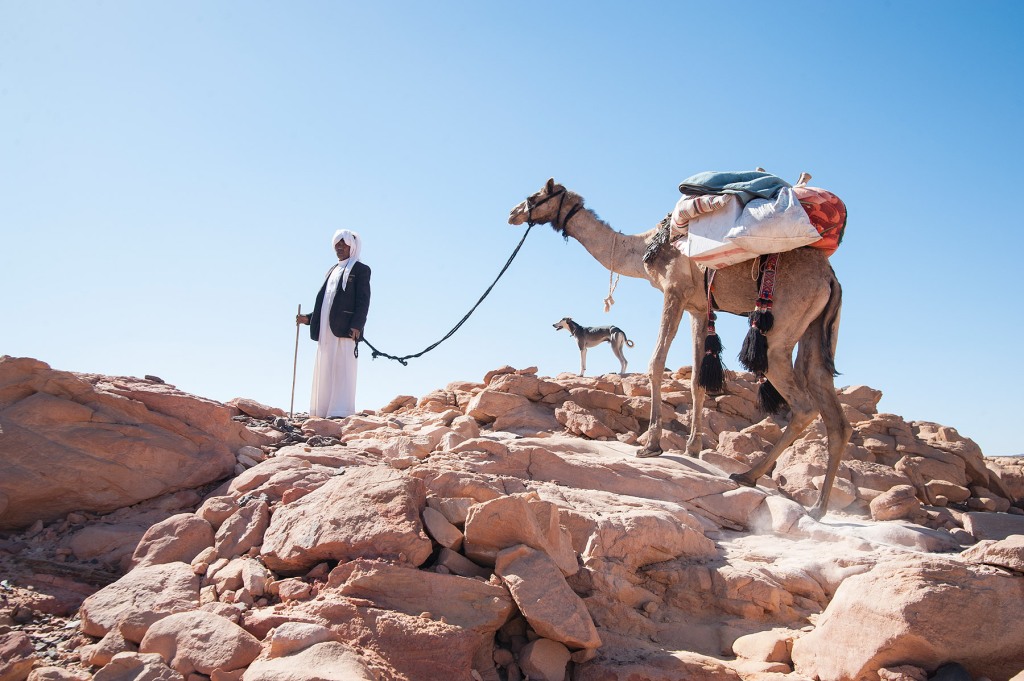

I had the opportunity to backpack a whole month through one of the most magical places of our planet: SINAI !! Now finally on my blog and website. Magazines out there, if you are looking for a story about SUSTAINABLE TOURISM, please reach out to me. Photos and text available. During the Corona pandemic, it became clear for many people that we have lost close contact to nature and also that many of us need to slow down and concentrate on the really important and essential things in life. The Sinai Peninsula, Egypt is one of the few places on our planet where we still can find vast untouched areas, like the desert and the mountains, that offer the opportunity to (re)connect with nature in a profound way. And what could be better than hiking in magical mountains or to get really slow and contemplative during a desert trip without any car, just on foot or on top of a camel? My trip began in a tiny straw beach hut a few kilometres north of Nuweiba. Then it took me deep into the desert in the heart of Sinai, accompanied by an experienced Bedouin desert guide. Lastly, I found my way to St Catharine village, from where I hiked different mountain trails every day until my legs couldn't take it any more.
Sinai Desert Wadi Ghazala




What happens when you leave your comfort zone? You will only know by leaving your comfort zone! One of my mantras. If there is one thing that this ongoing pandemic has shown us, it is the fact that we are not treating our planet very well and many of our life choices are not sustainable. Mass tourism is one of the sectors that not only tends to exploit nature, but also the local population who in many cases are not included in the gains. So I decided this year to go back to the roots of travelling, when it was about visiting a place and getting to know its culture and people, together with experiencing the power of nature. I wanted to move slowly with local transport, stay at places that are family run, embrace simplicity. So I packed my backpack and without any plan in mind, I travelled for a month in Sinai, Egypt.




A bright yellow stripe with a red border emerges over the mountains as a burning silhouette. I can see the sunrise over Saudi Arabia through the opening in my straw hut that serves as a window. Not the worst view. The Red Sea is swooshing quietly to itself, lapping the stony shore at its own gentle pace. It is only six o'clock and I am relaxing on my mattress on the floor under a mosquito net. There are four weeks of vacation in Sinai ahead of me. The plan? To have no plan! I had only reserved this wonderful beach hut in RockSea Camp north of Nuweiba for the first few days and was content follow the flow of things. RockSea is named after the daughter Roxy of the German couple who manage this wonderful, solar-powered eco-camp. Not hipster style eco with avocado toast and chai latte. The wastewater from the communal showers and toilets is filtered and ultimately used to irrigate the few plants in this arid desert landscape. Water is the true treasure of the desert and every drop is sacred. There are only simple wooden bungalows and thatched huts, which if need to be removed one day, will leave no trace.





Ahmed Mansour, a hermit from the I'tlah Valley in the Sinai Mountains, spontaneously invited me and my companion Mohamed to his little stone house. We sat on thin mats on the floor around a small cooking area. A welcome break after two hours of hiking over uneven rocks and beaten paths. Ahmed brewed a special herbal mixture with rose petals in an old sooty tin can, it smelled delightful. With his light grey beard, yellow kefiyeh headscarf and upright, proud posture, he appeared as some kind of incarnation from ancient history. It seemed to me that I had made on a journey back in time, back to a time when everything was slower and simpler. He told us about his life with great passion. For over 40 years, he had practised as a doctor in Saint Catherine, a small mountain settlement some 1,600 metres above sea level that had been traditionally inhabited by the Jebeliya Bedouin tribe (people of the mountains). Like many Bedouins in this area of his age, he was familiar with the medicinal herbs that grow in the area. He had had enough of busy village life and had withdrawn to this valley to enjoy a close connection to nature and the indescribable peace. Once a week he makes the two-hour walk to Saint Catherine to stock up on groceries and sometimes to still practice as a doctor. After two days, he always returns. I try to imagine what it would be like to live in a place that can only be reached on foot without neighbours you would have to have faith in life.


EGYPT, SINAI: The town of Saint Catherine lies 1600m above sea level at the foot of the Sinai mountains. Mostly known for its famous Greek-orthodox monastery and Mount Sinai. But the region offers many peaks and valleys, gardens and many religious sites that you can explore walking or hiking. The region is a UNESCO World Heritage Area for its natural and cultural importance.



Claudia is Represented by Global Assignments agency & is available for Commission in Seville, Spain
